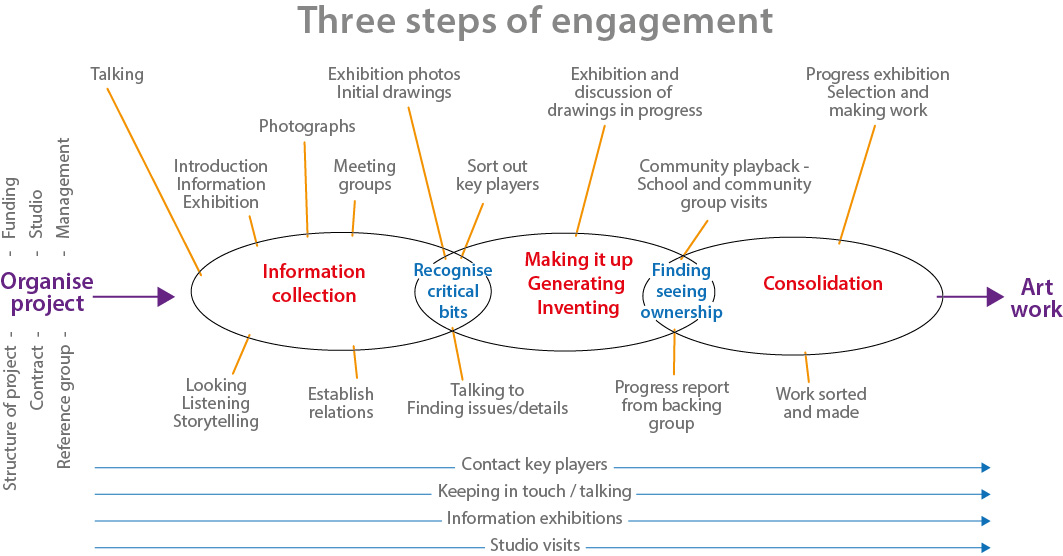Artist’s Statement:
Phill Rooke
There is a tendency to read all artwork done in a community context as simple reportage or illustration, and if figuration is involved, to see it as one-dimensional, a mere ‘picture of’. Modernism has seen the notion of story enhance its presence in writing a film, while it has been almost removed from painting and sculpture.
I was trained as an artist in the modernist academy where studio/gallery practice is the norm. Wishing to work outside the gallery meant that I was confronted by contradictions. The abstractions and aesthetics of the modernist conditions were part of my life and training, yet, when working within the community, I found that people recognized themselves within their intimate and individual stories. It is a constant challenge to take advantage of the broad sweep of modernist aesthetics whilst engaging with these stories.
The painted sculptures that I make are not simply a voyeuristic view of the community/world/people, but an engagement between the artist and the community, ‘an engagement with a difference’. I often make the work in the community with people becoming involved in the design and making. Running parallel to this is intellectual and cultural engagement. The artist and the community are at the centre of this crossing over and it looks like this:

The resulting sculpture and process is constructed as a story. Not to be confused with reportage or illustration. For they are tied to time and place. The story’s essential tension is not in the storyline and their mystery is not so much in their destination as in the suspense of the story, in the mystery of the spaces between the images, towards that destination. Writing about the written story, John Berger said, “No story is like a wheeled vehicle whose contact with the road is continuous. Stories walk, like animals or people. And their steps are not only between the narrated events but between each sentence, sometimes each word, every step is a stride over something not said.”
Stories are discontinuous and based on a tacit agreement about what is not said and what connects the discontinuities. The artist and the viewer are only part of this agreement; the central part is those whom it is about. It is between their actions and the attributes and reactions that the unstated connection is made.
In the sculpture/picture story you search for what is there, the mystery in the reflection on the spaces. Working through this crossover process the spaces often appear only in the idiom and the manner of peoples’ thought. In the resulting work, the spaces are derived from this process and sit between and in the images and iconography of the work. If the process and the work are successful it must maintain a sense of tension and unfolding; images once seen as profane become profound. As people take ownership of this work it becomes part of their living culture.